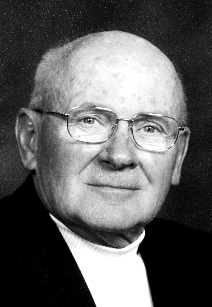
After reading Glen Schmitt’s story about fall panfish fishing in the Oct. 4 issue of the Outdoor News, I’m tempted to try to work a few more angling efforts into my fall agenda of outdoors fun. He made it sound quite simple, find a lake that produces plate-sized bluegills, look for the greenest weeds you can find, usually in about 12 feet of water next to deeper water. Then tip a jig with live bait or plastic and enjoy yourself. He also noted bluegills are less prone to spook like other species of fish and you can drop the anchor and fish vertically for them. Large rocks next to a deep hole is another hint he had for fall bluegill anglers. In the same issue Gary Clancy recounted a grouse hunt with his son-in-law, Lee, when they pounded the brush for a total of 59 hours, had 84 flushes, shot at 39 of the birds flushed and harvested 15. He commented about how well their two dogs worked and he figured he and Lee were shooting pretty well considering the thick underbrush gave the woods a jungle-like condition. He was pleased with the number of flushes they had and urged grouse hunters to head north, if not for hunting, he said the scenery alone is worth the trip. They also enjoyed a fish fry from the sunfish and crappies they caught off the dock. He wrote his story back on Sept. 29th when the fall colors were beginning to show themselves. Grouse hunting may be a better option than pheasant hunting this fall which begins on Oct. 12th. The cackles are few and far between in this neck of the woods and I’m not hearing about people seeing very many coveys of pheasants. The reports from neighboring states are also pretty dismal and will have an effect on the economy hunters generate for cafes, motels, etc. in states like South and North Dakota. The game and fish departments from those states seem to tell it like it is and the pictures they have painted for us non-resident hunters aren’t pretty. . . Minnesota’s DNR is experimenting with farm animal grazing on selected Wildlife Management Areas in an effort to determine if grazing is helpful or detrimental to wildlife. I’ve walked in enough cow bumps while hunting pheasant and consequently I’m skeptical about allowing grazing in low areas and next to swamps. It sounds like it will take about three years to come to any grazing conclusions. My gut thought is it isn’t going to work. My experience with cattle has been the grass is always greener on the other side of the fence and it will be a difficult one to control. I hope I’m wrong and these efforts will improve pheasant habitat which, along with weather, are the two necessary ingredients for maintaining a decent bird population.
* * *
Duck and geese hunters are coming back with mixed reports of this fall’s season with Mike Muller, who hunts ducks, geese and ruffed grouse in Manitoba, Canada each year. He didn’t feel this year’s hunt so far has measured up to previous years. He figures the lack of grain stubble fields and the food they provide has hurt the early duck migration flocks from stopping. Apparently it was too wet for farmers to seed small grains last spring which has created this dilemma for hunters. Goose hunting was good, but off from a year ago for the same reason. As for the ruffed grouse, Muller said he didn’t shoot at any and his son, Kenneth, harvested only three. Neither one of them was beating any brush for grouse, but normally that isn’t necessary as they usually show up on the forest trails in the late afternoon. Their host, Jim Baker, figured the grouse might still be back in the woods and didn’t need to come to the trails yet. Daryl Hennen, who hunted ducks and geese in North Dakota, gave me kind of a tongue-in-cheek comment that it sure takes a lot of time to skin geese and ducks when the shooting is good. He said he had plenty of shells, but that wasn’t the case with his son, Adam, who enjoyed a great morning of duck and goose hunting with a cousin, Noah Froehling, and a couple of his friends. Their numbers that morning were in the forty something. Daryl and his third son, Tony, were hunting with Eric Froehling (Noah’s dad). He commented they would have done better that morning, too, had his marksmanship been better . . .
* * *
Topics by Norm A. Holen: “Quoted definition of chaos: Four women dividing a luncheon check” and “A pedestrian has been described as a motorist who has found a parking space.” (From the Sept. 25, 2013, issue of the Thief River Falls Times’ Echoes from the Past).

Be the first to comment